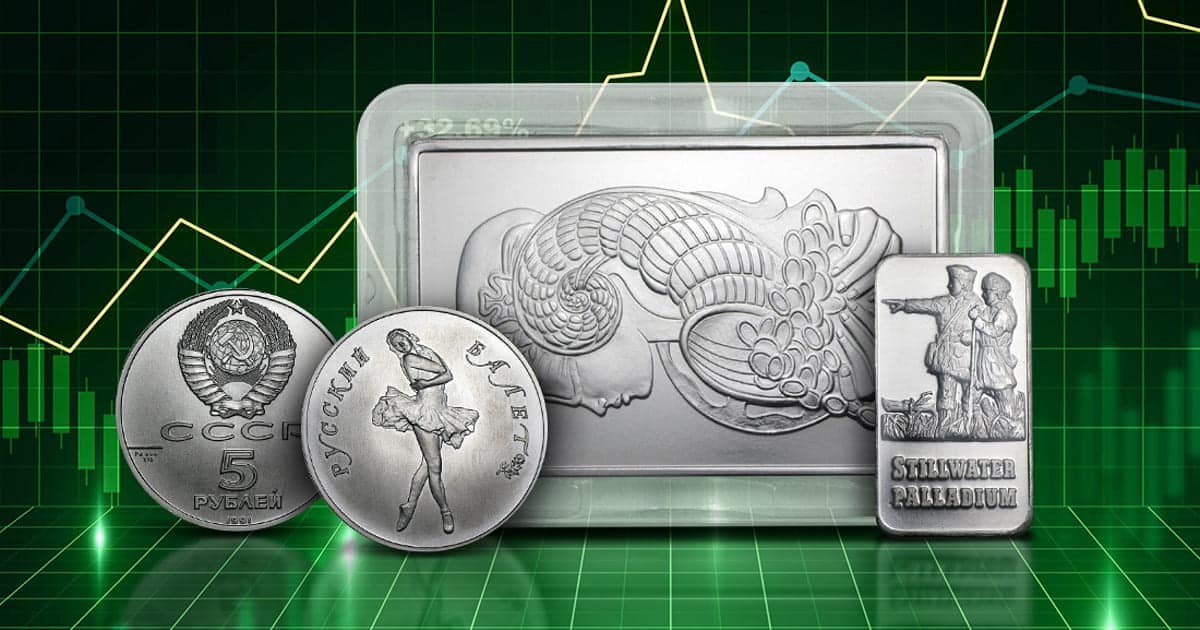
The History and Factors That Affect Palladium Prices
It is important to know the multiple factors that impact the price of Palladium when investing in the metal. You’ll want to explore what key factors influence the price of Palladium. One world event can send the Palladium price soaring or slipping. Not all economic news affects all Precious Metals prices the same way.
Take, for example, the 2015 Volkswagen diesel car recall. The German company had implemented software that tricked emissions tests, making it appear that their cars were more environmentally friendly than they actually were. This created a public relations nightmare and Volkswagen has had to take serious steps to repair its reputation.
This situation, however, impacted the value of Palladium and increased its prices above Platinum price for the first time in over a decade.
Palladium and Platinum are key components of catalytic converters in cars. These converters help transform gas into less harmful substances. But only Platinum is used in diesel car catalytic converters.
Palladium, on the other hand, is typically used in gasoline cars. As a result, this one event potentially boosted the use of the metal in more gas-fueled vehicle production and increased Palladium price in higher demand. And, of course, the potentially lower demand for Platinum with possibly fewer diesel cars on the road could affect Precious Metal’s price.
Palladium is also used in jewelry, watch bearings, scientific instruments and electroplating. Since this metal has such high industrial use, this limits its supply even more.
Palladium Prices Depend on the Politics of Supply
When considering the current price for Palladium, you’ll want to look at the historical prices, then consider other factors that have and will continue to influence the price. Supply and demand are both key factors. It is important to note that roughly 80% of the world’s Palladium comes from South Africa and Russia, making Palladium prices contingent on the political and economic events in those two countries.
It is helpful to take the time to understand Palladium’s supply chain and how that consequently impacts Palladium’s price. For example, in the last decade, South African Platinum mines have become a flashpoint for social unrest regarding miners’ workers’ rights and earning fair wages.
The longest miners’ strike was in 2014 when 70,000 workers from three major Platinum mines—Impala Platinum, Anglo American Platinum and Lonmin Platinum Mines—in Rustenburg refused to work for five months. Since Palladium is a Platinum group metal, this resulted in both Platinum prices and Palladium prices rising in 2014.
This strike also caused a 1.3% GDP reduction in South Africa’s first quarter of the year. The South African strike caused both Platinum prices and Palladium prices to skyrocket—with Palladium prices reaching a three-year high—because the country’s Platinum and Palladium output decreased by 60%. It was estimated that around 5,000 ounces of Palladium were lost per day due to the strike. South Africa plays a vital role in Platinum and Palladium mining because they produce 40% of the Precious Metals’ global supply.
During the South African strike in the spring of 2014, the other leading producer of Palladium, Russia, was facing increased backlash from the United States and other European countries for its de facto annexation of Crimea. As tensions rise between Ukraine and Russia, so does anxiety around how this will affect Palladium prices.
Russia’s lack of transparency about the amount of Palladium they have in their country’s stockpile has driven prices up in the past twenty years. At the turn of the century Palladium prices hit a record high of $1,100 per Troy ounce due to a boom in electronic use, but also because Russia was hinting that they weren’t going to sell any of their Palladium stockpiles.
During this panic, Ford and General Motors bought the high-priced stock thinking that Russia would not sell and there would be a shorter supply of the metal. Unfortunately for them, Russia did end up selling and buying the overpriced Palladium cost the companies thousands if not millions. Since 2010, the world has seen a shorter supply of Palladium, resulting in unprecedented price increases.
Growing concerns over climate change have pushed legislators worldwide to pass more drastic regulations to curb greenhouse gas emissions. As harsher restrictions have been placed on automotive emissions, the demand for Palladium and Platinum has risen to meet automobile production.
Expand your collection today by shopping our assortment of Platinum and Palladium.




